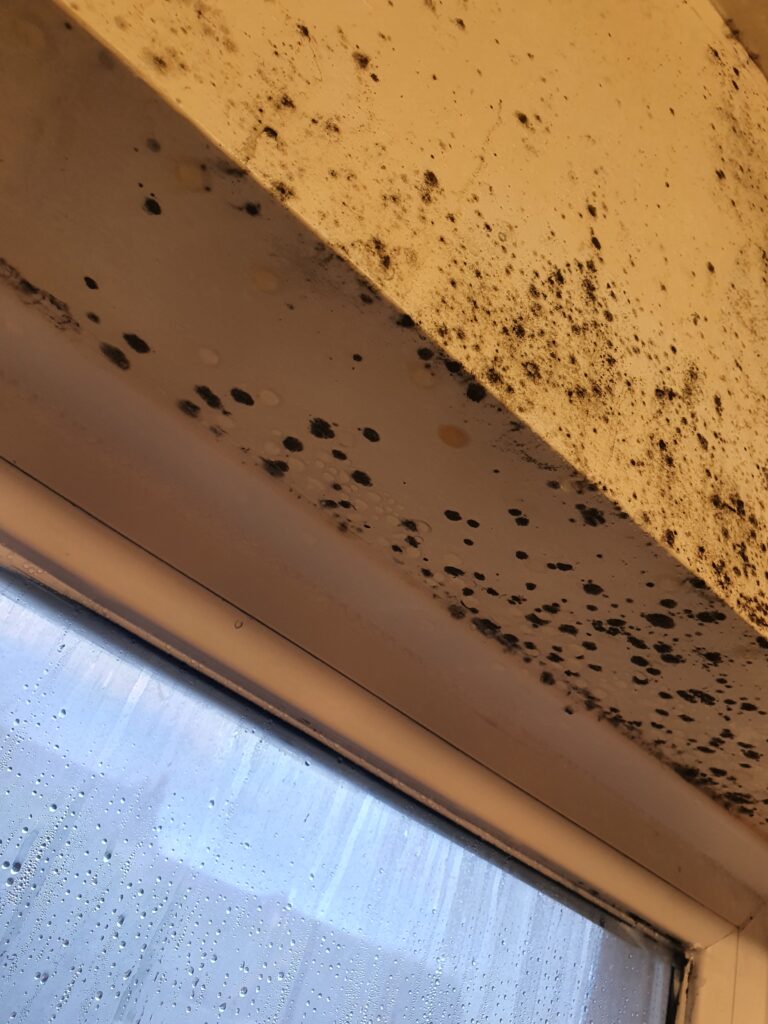What is condensation?
Condensation is caused when warm, damp air (humidity) is released into the atmosphere of our homes and is unable to disperse outside.
This normally happens because lack of ventilation in the property allows this water-laden air to come into contact with cold surfaces such as windows and walls, where it will condense and release the moisture it holds onto that wall or other surface.
Affecting an estimated one in five UK properties, condensation is the most common cause of damp problems in our homes.
Typical signs of a condensation problem
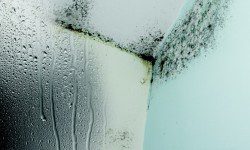
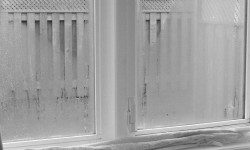
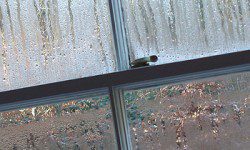
The air in buildings can have a high level of relative humidity due to the activity of the occupants (e.g. cooking, bathing, drying clothes, breathing etc.). When this water laden air comes into contact with cold surfaces such as windows and cold walls, it can condense, causing water to be deposited. The point at which the water held in the air changes from vapour to liquid is known as the dew point.
Condensation is often associated with poor heating and ventilation in buildings, but, this simple view can be misleading. Condensation is chiefly a winter problem; the external air temperature is low and external walls and windows are cold.
Moisture in buildings
Importance of ventilation
The usual sequence of events is as follows:
1. Cold air enters the building
2. The air is warmed for the comfort of the occupants
3. The warm air takes up moisture
4. The warm, moist air comes into contact with cold surfaces, walls, windows, etc. and is cooled below its dew point
5. Condensation occurs as the excess moisture is released
Walls in kitchens and bathrooms (where atmospheric moisture levels are usually highest), solid external walls, corners of rooms and behind units etc, un-insulated solid floors and cold bridges such as concrete lintels set in cavity walls, are commonly the areas in which condensation takes place.
Intermittent heating and cooling of the property can aggravate condensation problems, since it allows warm, damp air to cool, reducing its capacity to hold water. Dew points are reduced, allowing condensation to occur. When the air is reheated, water is taken back into the air, only to be deposited again when the air temperature drops.
Condensation problems
Although condensation will be present in nearly every home in some form or another, excessive condensation does have the potential to develop into a wide variety of problems that may result in your property requiring expensive redecoration or repair work. If left untreated, condensation can also create an environment that encourages harmful forms of mould to germinate that, alongside being a known health hazard, can cause damage to furniture, fabrics and fixtures.
What do condensation problems look like?
Mould – the biggest problem of condensation is the presence of mould in your property, which is not just unsightly, but can also be a potential health risk.
Wall and furniture damage – Condensation often forms on windows and it is not uncommon for damp patches to appear on nearby walls. This can lead to further mould growth and also cause paint to discolour peeling wallpaper. Mould can also begin to form on nearby furniture, causing a damp and musty smell.
Running water on windows and walls is perhaps the most immediate indication of a condensation problem. If ignored, this can lead to decay in window frames and deterioration in the decorative condition of the property such as stained curtains and the appearance of moulds on the surface of wallpapers and paints in poorly ventilated areas. Condensation can also occur under suspended floors, greatly increasing the chances of a fungal decay in floor timbers.
A much less common form of condensation occurs when the dew point is reached, not on the surface of a wall, but within the structure of the building itself. This is known as interstitial condensation and can easily be mistaken for rising damp or penetrating damp. The inclusion of retrofit insulation and draft proofing etc, can also increase the risk of condensation, as moisture will be prevented from escaping.
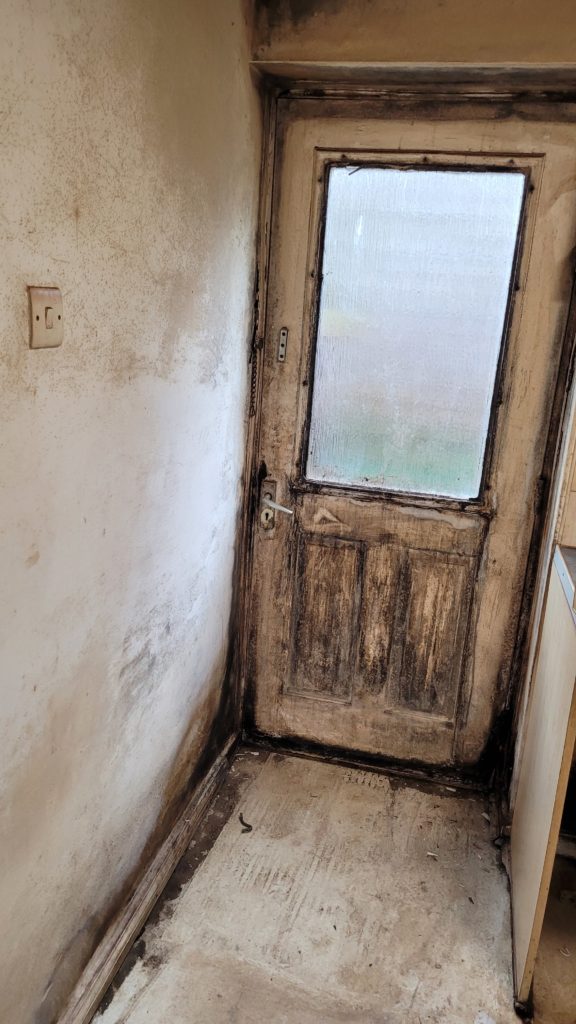
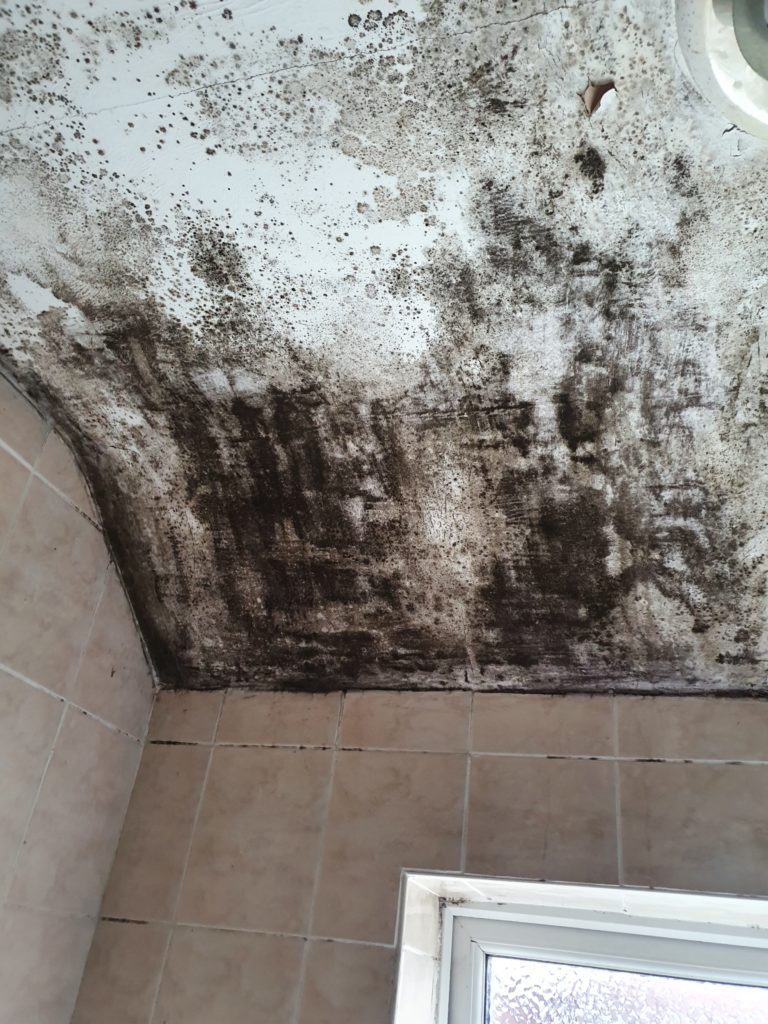
How to get rid of condensation?
Condensation is a real problem, and where it persists, a specialist qualified surveyor should be engaged to explore the cause of the problem and provide advice or propose solutions. We have listed just a few of the possible methods of controlling condensation below:
Simply heating the air is unlikely to be a satisfactory solution, not only on grounds of cost, but also of practicality. Unless cold surfaces and excess moisture are eliminated, condensation is almost inevitable. Any remedial action, therefore, must involve both a lowering of moisture levels and the elimination of cold surfaces.
Improved heating and ventilation, coupled with specific action in relation to cold spots, will usually result in a significant improvement in conditions, although there may be circumstances in which alternative methods are required. A modest but constant background heat is preferable to intermittent heating, since this will help to maintain a higher ambient temperature in the fabric of the building.
The installation of suitable humidistat controlled extractor fans in a kitchen and bathroom will carry away moisture-laden air from the two areas most responsible for condensation with minimal running costs. This is now required by the Building Regulations in new constructions.
Where an open fire or fixed gas fire exists, a certain amount of ‘natural’ ventilation will occur and where additional ventilation is provided, it is important that this is not blocked off.
An alternative to heating and ventilation for the control of moisture in the air is a dehumidifier. This is a device which draws in air, cools it to remove moisture which is collected in a reservoir and reheats it to an acceptable temperature before re-circulating it.
The main disadvantage of a dehumidifier is the need to constantly empty the collection vessel when it becomes full. Depending on the level of moisture, this could be once a day or more. There is also the problem of ensuring the dehumidifier is large enough and positioned correctly so it will cover the whole house.
A recent trend has been towards the increased use of positive input ventilation systems (PIV’s). These units generally take dryer air from roof spaces or lofts and mix this with air in the dwelling. This is done at a very low rate (below half an air change per hour) and has the effect of lowering total moisture content and removing moist air from natural leakage.
The advantage of these units is their ability to control excess moisture throughout the whole house from a central location, and because they are ‘fit and forget’, very little maintenance or user input is required. The only evidence of the unit is a small diffuser vent on the landing ceiling. Other units are also available, which can provide cooler air in summer months or have built-in heat exchangers where no free roof void is available (in a flat for instance).
How to prevent condensation and mould?
- Try keeping your heating on longer at a lower temperature. A modest but constant background heat is preferable to intermittent heating, as this will help to maintain a higher ambient temperature in the fabric of the building (and it’s more cost-effective)
- Regularly open the windows (on latch) to provide background ventilation and to prevent the build-up of moisture, especially in kitchens and bathrooms (opening them too wide will just let cold air in)
- Avoid drying clothes internally. If this cannot be helped, clothes should ideally be placed in the bathroom to dry, with the door shut and window open (don’t dry them on radiators throughout the house)
- Clean down mould with warm soapy water as soon as you see it (don’t use bleach)
- Keep the door to the bathroom closed, preferably at all times (believe it or not, moisture from bathrooms and kitchens can cause mould to form in other areas of the property, behind beds and furniture for example)
- When filling the bath, run the cold water first and then add the hot, as it will reduce the steam, which leads to condensation, by up to 90%
- Always cook with pan lids on and turn the heat down when boiled
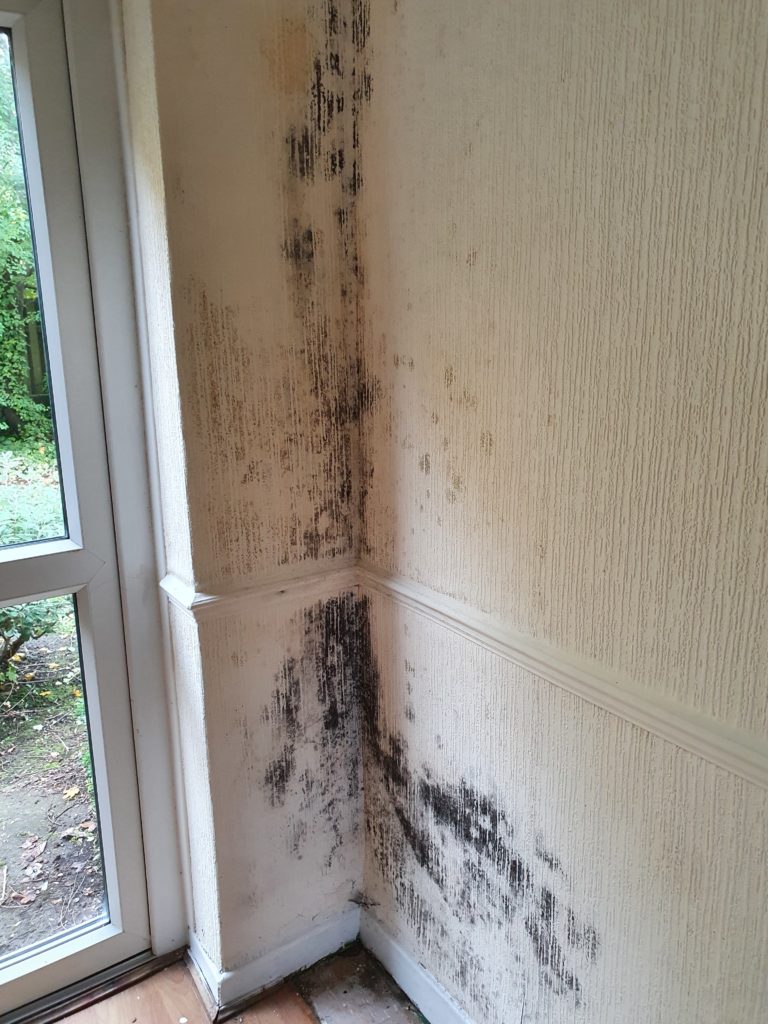

Why is condensation worse in the winter?
Condensation is more likely to appear in the winter and this can be attributed to cooler temperatures. As temperatures begin to drop, colder windows and walls will result in warm air condensing faster and more abundantly than it would at other times of the year. Also, people tend to stop opening windows in winter, making it increasingly difficult for excess moisture to escape, therefore, condensation is likely to occur.
What is mould?
Mould is a common household problem that is generally caused by condensation, leaks or moisture in the air.
In addition to its unsightly appearance and damaging effect it can have on furniture and fabrics, mould is also known for for the potential health impacts it can have.
All buildings are potentially at risk from mould and it can appear in any part of the home where there is a damp, stagnant atmosphere.
How can mould affect your health
Moulds are caused by too much moisture in a building and they emit spores which can cause a variety of health effects. Some people are particularly sensitive to them, such as babies and young children, the elderly and those with allergies or asthma.
For those with allergies, breathing in or touching mould spores can cause severe reactions, including asthma attacks, fever and shortness of breath, while for others, mould can bring on a runny nose, red or itchy eyes and irritated skin.
How to identify mould on walls
Mould has a very distinctive appearance. When active and germinating, it is usually dark green or black and slimy. In its inactive state, it will appear dry and powdery, however, it is important to recognise that mould can cause problems in either state.
If the affected wall is made of non-porous material, then the mould will appear on the surface, making it quite easy to spot and identify, however, it is often the case that mould has grown in the cavities behind the wall itself, or behind wallpaper, which is difficult to see without conducting a disruptive survey.
What are the signs of mould on walls?
- The appearance of a black or very dark green slimy mould on the wall
- A musty earthy smell often accompanies mould growth on walls
- If problems associated with allergies such as sneezing or skin irritation seem to improve when you are outside of the home, then you may have a mould infestation in your walls
What causes mould to grow?
There are four typical reasons why you are seeing mould on your walls:
- Excess moisture in the form of condensation
- High humidity and poor ventilation
- Water leaking into the property
- Other damp related issues such as penetrating damp
The two leading causes of mould appearing on or behind your walls can be resolved by introducing more ventilation into the home, either through opening windows, clearing vents or installing a ventilation unit.
With regard to the other two reasons, plumbing defects and burst water pipes can lead to a build up of moisture and high humidity behind the walls. In terms of other types of damp being the possible cause, issues with penetrating damp from sources such as burst downpipes can lead to moisture penetrating through to the inner wall and causing mould to grow on the wall.
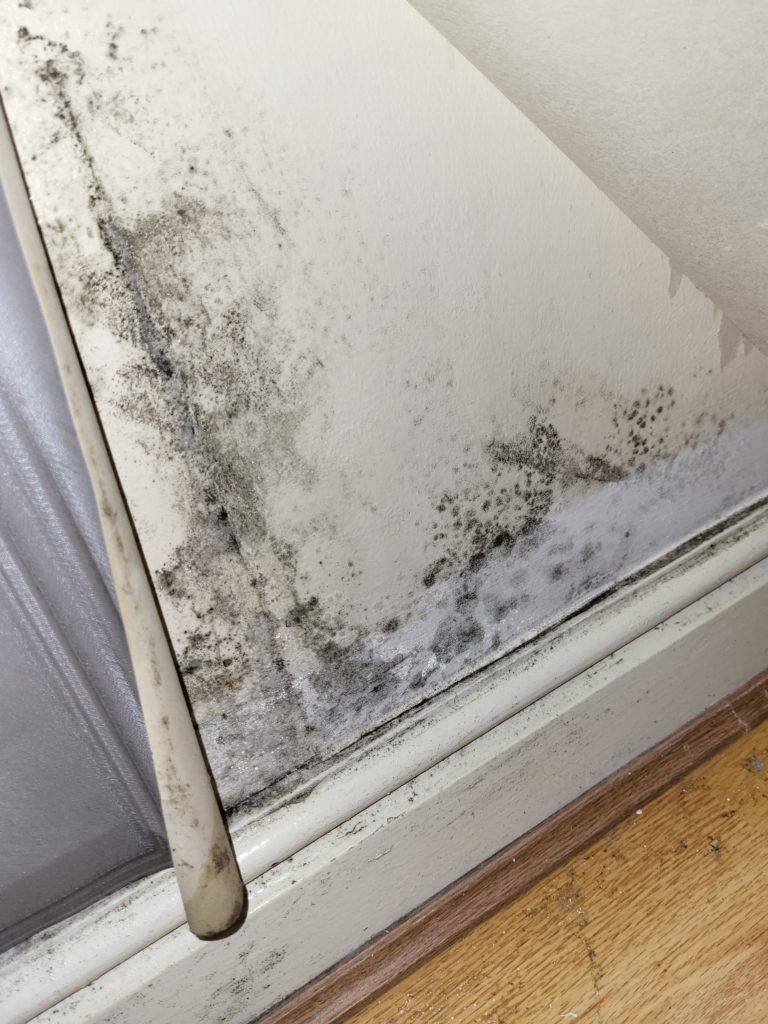

How to get rid of mould on walls
In order to stop mould from occurring, you must tackle the source of moisture. Without tacking the source of moisture, the mould is likely to return.
There are some very cost effective methods to tackle and get rid of the mould ranging from free solutions to mechanical solutions.
Mould removal
Mould removal can sometimes be as simple as using a mould cleaning product and opening some windows to reduce condensation. However, persistent and large scale mould problems that affect entire rooms often require professional treatment such as specialist cleaning and the installation of mechanical ventilation units to prevent mould forming in your property.
Can I not just wipe off mould?
Using just soap and water is not an effective measure to permanently get rid of mould. Wiping mould away will temporarily solve your issue, but the mould will quickly return if you do not fix the underlying issue of what is causing mould growth.
Mould is caused by excess moisture and insufficient ventilation and these issues need to be treated in order to prevent mould from recurring in your property. To treat mould, you must first establish what is causing excess moisture. Following this, the area must be sufficiently ventilated so that moisture in the air does not land on colder surfaces and cause mould.
How to solve mould problems that keep coming back
If a mould problem persists despite your best efforts to prevent it, then out professional surveyors will be able to assist. A mould survey from one of our experts will get to the bottom of the mould problem in your property and allow our team to provide the best solution for you.

